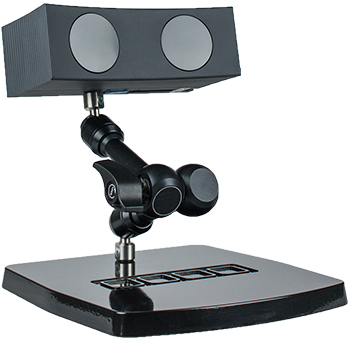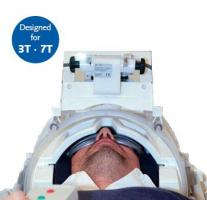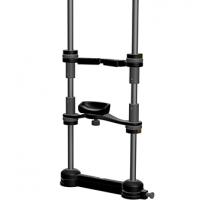Eye Tracking / LiveTrack Lightning
LiveTrack Lightning

Questions about LiveTrack Lightning?
LiveTrack Lightning delivers accurate, precise estimates of eye rotation, Direction of Gaze coordinates and pupil size. The equipment is ideal for oculomotor research; it is easy and fast to setup and requires minimal calibration. Use it for recording saccade metrics, gaze contingent displays, and monitoring observer behaviour and pupil response during visual psychophysics and cognitive neuroscience experiments.
LiveTrack operates as a standalone system but also neatly integrates with the Display++ Touchscreen LCD monitor, AudioFile stimulus processor, and the other Tools for Vision Science in our range.
![]() M0204 LiveTrack Lightning Datasheet
M0204 LiveTrack Lightning Datasheet
Guide Price: £10000
SKU: M0204
How LiveTrack Works
Video eye tracking can be understood from simple geometry. When the eye moves relatively to the head it rotates within the orbit (eye socket). It rotates about three axes through the centre of the eye. Of most importance are the horizontal and vertical rotations, which are made to change the direction of gaze. These are large, up to ±50 degrees and can be exceedingly fast, up to 1000 degrees per second. The torsional (clockwise/counter-clockwise) rotation is small and for most applications of no interest.
The clear window at the front of the eye, the cornea, is smooth and kept constantly wet with tear fluid. When the eye is viewed in a dimly lit room on a bright sunny day, a bright image of a window can be seen on the cornea. This reflection is often referred to as the 'First Purkinje Image'. Although the eye is not a perfect sphere, the corneal surface is itself spherical and it is possible to determine its centre when illuminated by known light sources. The pupil, being the dark black center of the eye, is easily distinguished from any reflections. With suitable optics, an infrared sensitive video camera can be used to observe the eye while remaining outside of the participant's field of view. By measuring the movement of the Purkinje reflection relative to the pupil, it is then possible to calculate head movement, eye rotation and consequently the Direction of Gaze. This is modelled by an equation like this:

A Direction of Gaze calibration procedure involves image measurements recorded at a set of known target positions presented on the stimulus display, which are then used to tune the parameters A11 to A44 in the above equation. The eye tracker can then accurately estimate where the participant is looking from subsequent measures of pupil and Purkinje image centers while accommodating both eye and head movement.
Knowledge-Based, Adaptive Algorithm
Existing eye tracking systems, which are based conventional image segmentation algorithms, provide adequate performance most of the time in ideal conditions. We wanted to engineer a system that works all of the time and is extremely robust. The solution must operate in a wide range of illumination conditions and with any participant. To achieve this we employed knowledge-based image processing techniques developed for target identification in military applications. The recursive algorithm uses knowledge about the mechanics of the eye and previous history of eye position to give extremely robust tracking. This results in no 'dropped frames', i.e. occasions when the algorithm was unable to detect the features of the eye.
The algorithm is also adaptive. By incorporating prior knowledge of what the image should contain, the system is able to rapidly adjust itself to each individual. Conventional solutions all need to be tuned or adjusted for good tracking performance. This is often time consuming and in some cases the system is defeated by ambient illumination. We designed the software so that no adjustments are needed over a wide range of lighting conditions. The participant can be seated at the headrest, the imaging unit aligned, and the calibration commenced in seconds.
LiveTrack incorporates an anatomically and physiologically plausible model of the head and eye. Rather than use a simple sphere to represent the eye, as most published devices do, we use a more complex model incorporating individual parameters for corneal and globe diameters. This enables us to increase the theoretical accuracy of measured eye rotation.


